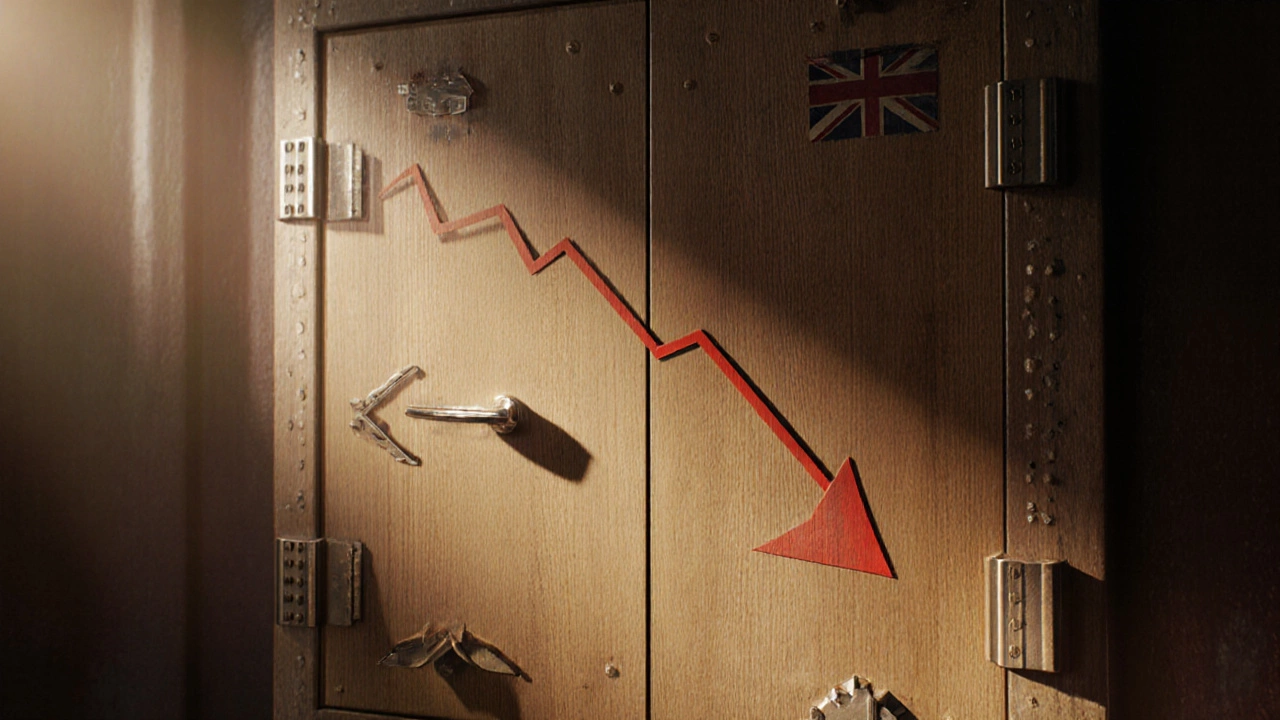ISA Risk Calculator
Results Summary
ISA can feel like a safe place for your money, but not every ISA is risk‑free. Below you’ll find the real reasons why you might lose cash and practical steps to keep your nest egg safe.
Quick Takeaways
- Cash ISAs are low‑risk, but inflation can erode value.
- Stocks and shares ISAs can lose money when markets fall.
- Innovative finance ISAs expose you to borrower defaults.
- Tax relief only protects you from a tax bill - it doesn’t prevent capital loss.
- Diversifying, monitoring fees, and using a trusted adviser can cut downside risk.
What an ISA Actually Is
When people talk about an ISA is an Individual Savings Account that lets UK residents save or invest tax‑free within yearly limits set by HMRC, they’re referring to a government‑approved wrapper for cash, stocks, or other assets. The tax advantage means you won’t pay income tax on interest, nor capital gains tax on profits, as long as the money stays inside the wrapper.
Types of ISAs and Their Risk Profiles
There are three main flavours, each with its own risk fingerprint.
Cash ISA is a savings account that earns interest, similar to a regular bank account but with tax‑free interest. The principal is protected by the UK Financial Services Compensation Scheme (FSCS) up to £85,000 per bank.
Stocks and shares ISA is an investment wrapper that can hold shares, funds, bonds, and ETFs, exposing you to market movements. There’s no FSCS protection for market losses.
Innovative finance ISA is a peer‑to‑peer lending wrapper where you fund loans to individuals or businesses, earning interest but facing borrower default risk. It’s the most speculative of the three.

How Money Can Slip Out of an ISA
Even though the tax shield is strong, the underlying assets still behave like they would outside the ISA.
- Interest rate drop: In a cash ISA, the bank can lower the rate you earn. If the rate falls below inflation, the real value of your savings shrinks.
- Market downturn: Stocks and shares ISAs follow the stock market is the collection of exchanges where public companies’ shares are bought and sold. A steep decline can wipe out a portion of your capital.
- Borrower default: Innovative finance ISAs depend on borrowers repaying their loans. If a borrower fails, you lose the principal and any accrued interest.
- Inflation: Over time, prices rise. If your cash ISA earns less than inflation, you can’t buy as much with the same amount of money.
- Fees and charges: Management fees, platform charges, or transaction costs eat into returns, especially in low‑margin funds.
Real‑World Scenarios
Imagine you put £10,000 into three different ISAs.
- Cash ISA: You earn 1.5% interest per year. After one year you have £10,150. If inflation is 4%, the purchasing power drops to the equivalent of £9,730 in today’s money.
- Stocks and shares ISA: You buy a diversified fund that falls 15% during a market correction. Your balance becomes £8,500. Later the market recovers and you finish the year at a 5% gain, bringing you back to £8,925 - still below the original £10,000.
- Innovative finance ISA: You lend £5,000 at 8% interest and £5,000 at 6% across several loans. If two borrowers default on the 8% loans (total £2,000), you lose that principal, ending the year with about £9,300.
These numbers show that tax relief can’t stop the underlying value from moving down.
How to Keep Your ISA Money Safer
Risk can’t be removed, but it can be managed.
- Diversify within the ISA: Spread cash, equities, and bonds across different sectors and geographies. Diversification reduces the impact of any single loss.
- Choose low‑cost funds: High fees drain returns. Opt for index funds or ETFs with expense ratios under 0.2%.
- Monitor the FSCS limit: Keep cash ISA balances below the £85,000 protection ceiling per institution.
- Use a reputable platform: Look for platforms that offer transparent fee structures and robust security.
- Seek professional advice: A financial adviser is a qualified professional who can tailor investment strategies to your risk tolerance and goals can help you balance growth and safety.
Tax Relief vs. Capital Loss
One common misconception is that the tax‑free status of an ISA guarantees that you won’t lose money. The reality is that tax relief is the exemption from income tax and capital gains tax that ISAs provide, which only saves you from paying tax on gains you actually make. If the underlying assets fall in value, you still own less money.

What Happens If You Exceed Limits or Withdraw Early?
HMRC enforces annual contribution limits (£20,000 for the 2025/26 tax year). Going over triggers penalties and may force you to withdraw the excess, which could be a loss if the market is down.
Early withdrawals from a stocks and shares ISA are allowed, but you lock in whatever the market price is at that moment - potentially a loss. Cash ISAs usually let you pull money out without penalty, but you lose the tax‑free wrapper for that amount.
Should You Keep Money in an ISA?
Ask yourself these three questions:
- Do you need the money in the short term? If yes, a cash ISA or a high‑interest savings account might be safer.
- Can you tolerate market swings? If you’re comfortable with ups and downs, a stocks and shares ISA offers higher growth potential.
- Are you comfortable with the platform’s fees and security? Choose a provider that aligns with your values and budget.
When the answers line up, an ISA remains a powerful tool for tax‑efficient wealth building - as long as you understand the risks.
Quick Checklist Before You Add More Money
- Verify the FSCS protection limit for cash ISAs.
- Review the asset allocation in your stocks and shares ISA.
- Check the default rates and borrower credit scores in any innovative finance ISA.
- Confirm you haven’t exceeded the £20,000 annual contribution limit.
- Make sure you’re clear on the fee structure of your platform.
| ISA Type | Typical Return (annual) | Risk Level | Potential Loss Scenario |
|---|---|---|---|
| Cash ISA | 0.5% - 2% | Low | Inflation outpacing interest, reducing real value |
| Stocks & Shares ISA | 5% - 8% (long‑term) | Medium‑High | Market correction of 15%‑30% wiping out part of the capital |
| Innovative Finance ISA | 6% - 10% | High | Borrower defaults causing loss of principal on loan portions |
Frequently Asked Questions
Can a cash ISA lose money?
The nominal balance won’t drop because the FSCS protects the principal, but if inflation runs higher than the interest you earn, the real buying power falls - effectively a loss.
What happens if the stock market crashes inside my stocks and shares ISA?
Your ISA balance will follow the market value of the assets you hold. A steep drop means you own less money, but you won’t incur any tax on the loss. You can choose to stay invested and wait for recovery, or sell and lock in the loss.
Is the tax advantage of an ISA worth the risk?
Tax‑free growth amplifies returns over the long term, especially for higher‑yield assets. If you accept the underlying risk, the tax shield adds value. If you can’t tolerate any loss, a regular savings account may be a safer fit.
Can I move money between different ISA types without losing the tax benefit?
Yes, you can transfer funds from a cash ISA to a stocks and shares ISA (or vice‑versa) via a formal transfer. The transfer must be done through the ISA provider to keep the tax‑free status.
What should I do if I’ve exceeded the annual ISA contribution limit?
Contact your ISA provider immediately. They’ll usually return the excess amount, and you’ll avoid penalties. Any excess left in the ISA could be deemed a breach and may attract a fine.
